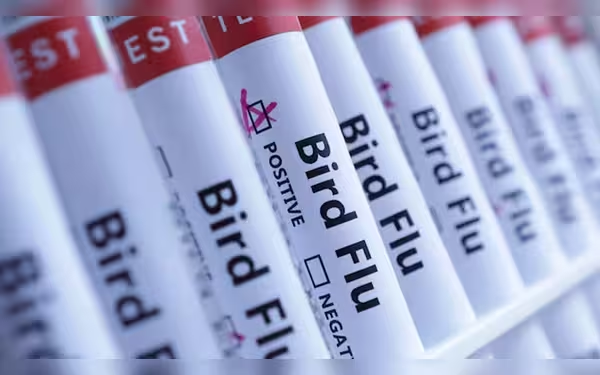Saturday, November 16, 2024 10:01 PM
Canada Reports First Human H5 Bird Flu Case in British Columbia
- First human H5 bird flu case in Canada.
- Teenager from British Columbia hospitalized.
- Health officials investigating infection source.
 Image Credits: geo
Image Credits: geoCanada reports its first human H5 bird flu case in a British Columbia teenager, prompting health officials to investigate the infection source.
In a significant development, Canada has reported its first human case of H5 bird flu, specifically in a teenager from British Columbia. This alarming news comes as health officials strive to understand the implications of this rare occurrence. The teenager is currently receiving treatment at a children's hospital, and health authorities are actively investigating the source of the infection and any potential contacts.
The H5 bird flu, a strain of avian influenza, is known to be widespread among wild birds globally. It has also been linked to outbreaks in poultry and even dairy cows in the United States. While human cases remain infrequent, the recent rise in infections among mammals has raised concerns among scientists. They worry that if the virus mutates, it could potentially spread from person to person, leading to a pandemic.
British Columbia's Health Officer, Bonnie Henry, emphasized the rarity of this event, stating, "This is a rare event. We are conducting a thorough investigation to fully understand the source of exposure here in B.C." This statement underscores the seriousness with which health officials are treating the situation.
In the United States, the Centers for Disease Control and Prevention (CDC) has been proactive in addressing the issue. They have urged farm workers who have been in contact with birds infected with the flu to get tested, even if they do not exhibit symptoms. Since March, nearly 450 dairy farms across 15 states have reported infections, and the CDC has confirmed 46 human cases since April.
In Canada, the situation is similarly concerning. British Columbia has identified at least 22 infected poultry farms since October, with numerous wild birds testing positive for the virus. However, it is worth noting that Canada has not reported any cases of bird flu in dairy cattle, nor has there been any evidence of the virus in milk samples.
As the investigation continues, it is crucial for the public to remain informed and vigilant. While the risk of person-to-person transmission remains low, the potential for change in the virus's behavior cannot be ignored. Awareness and preventive measures are essential in safeguarding public health. The situation serves as a reminder of the interconnectedness of human, animal, and environmental health, highlighting the importance of monitoring and responding to emerging infectious diseases.













